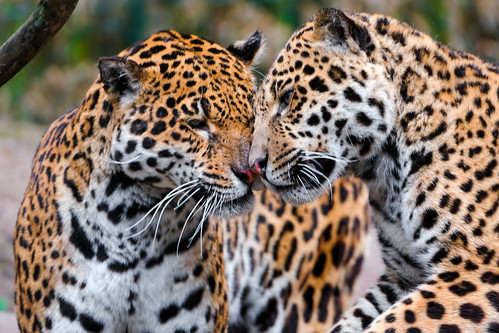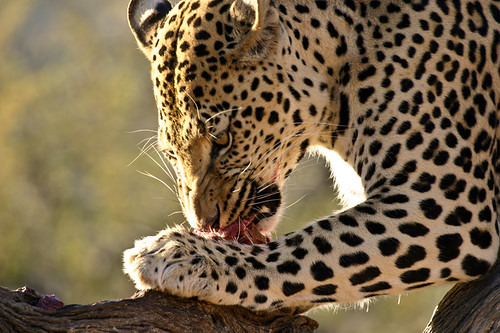JAGUARS
Also known as Panthera onca, their markings often include dots inside the centre of a small rosette of other dots. On top of that, the fur on the inside of the rosette tends to be darker than that on the outside. They're quite large, and can weigh up to 200 pounds. Their habitat tends to be around South and Central America, as well.

source

source
source

source

source
LEOPARDS
Panthera pardus, the smallest of the four 'big cats', lives in a ton of places. It's is mostly found in sub-Saharan Africa, though. Even so, scattered gropus can be found in India and parts of Asia. It's a species that is nearing the threatened staus, mostly because of the pressure on its habitat. Unlike the jaguar, there aren't any spots inside the rosettes of leopards, and they're usually smaller and more tightly packed. Also, just a note- melanistic jaguars and leopards are also all known as black panthers, though they're really different species of animals. Because of the leopard's wide range, there are a lot of subspecies of it, ranging from the African leopard to the Amur leopard.

source

source

source

source

source
CHEETAHS
This speedy animal is also known as Acinoyx jubatus. It's quite large, and it lives in most of Africa and the Middle East. Weirdly enough, while they can get up trees by jumping, they can't really climb them very well due to the way their paws have evolved. If you see a cheetah in a tree, chances are it either jumped or was carried up there. They are actually a vulnerable species, and do face a lot of threats to their survival. Unlike the jaguar and the leopard, their coats are just evenly spotted and don't have rosettes on them.

source

source
source
Those are some gorgeous big cats, aren't they?
Though of course, it wouldn't be quite complete without one more addition...

That's today's spider! And yes, it's actually a spider, continuing the theme of 'stuff with dots on'. Here are two more pictures of that same spider- it's fairly obvious once you look at it closely, but from a distance...

